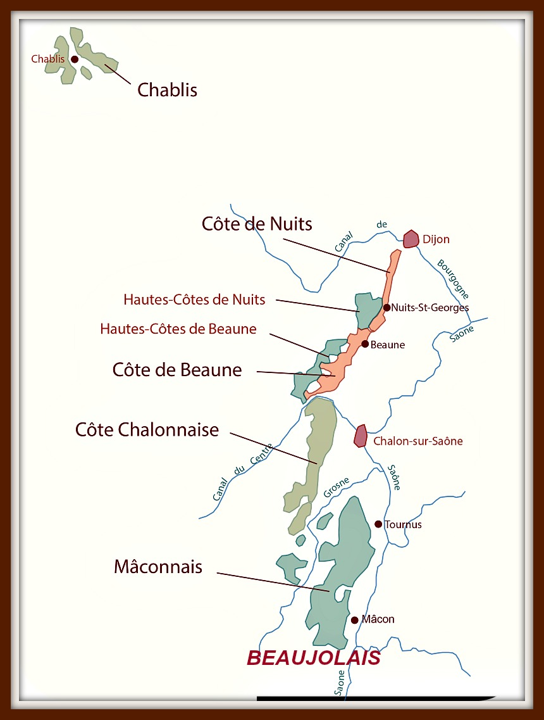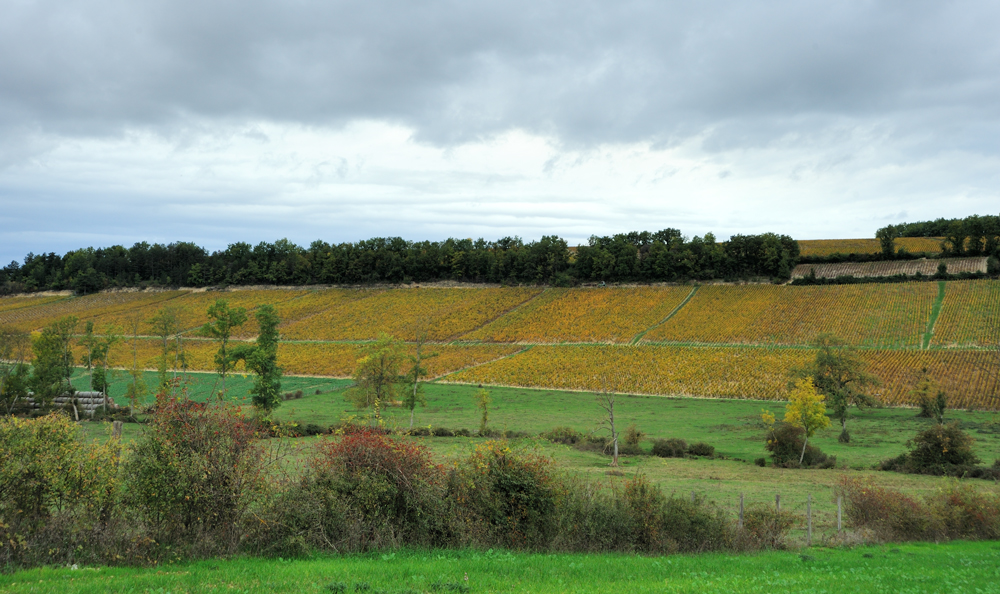
Vinyards of Cote Saint-Jacques around Joigny.
About Burgundy in general I am talking here, so let’s talk about North Burgundy in particular. In our wine case, we are talking about the Yonna region. The most well-known part of Yonna is Chablis. Famous, worldwide known wine. One of the most often illegitimate used names. Absolutely unique Chardonnay. Many simplified wine maps show this part of France just like Chablis, not caring about anything else. However, not only Chablis exists on the wine hills of the region. So, Yonna.

Actually, similar to Beaujolais which is often described as independent of the Burgundy wine region, the same approach should be applied to North Burgundy. If Beaujolais uses different grape varieties and viniculture technology, Yonna has different geology and geography. A simple look at the map shows how is far and isolated Yonna from the main Burgundy. As a result, although they use the same grape varieties (mainly Chardonnay and Pinot Noir), the wines are different.
From a geographical point of view, Burgundy is a part of the Rhône basin, and Yonna – is part of the Siena basin. Actually, Yonna is the feeder of Siena. In the 11-17th century, Yonna supplied wine to Paris and was the biggest wine region in France. Vineyards covered 40 000 hectares, and rivers Yonna and Siena provided waterways for wine to the capital. The name Burgundy was reserved for Yonna wine, and the wine of central Burgundy was called Macconias. In the 19th century, phylloxera came and destroyed many French vineyards. After phylloxera, railways came that destroyed the central transport role of waterways and wine from any region was easily accessible everywhere. The vineyards of Yonna never recovered completely, and now Yonna has only 4 000 hectares of them, 10 times less than before.
There are plateau Langr and massive Morvan between Yonna and central Burgundy. Before railways, the only transport way was the Burgundy canal – locks, locks, and locks, because of mountain passing (not high, but still).
Yonna has common geology with upper Loire and southern Champagne. Kimmeridge chain of upper Jurassic limestones. The lower layer is clay with inclusions of chalk and fossils, the upper layer is Portland limestone. This fossil-saturated soil gives a unique cold mineral taste of Chablis.

Chablis vinyards
The climate of Yonna is continental, with short summers and cold snowy winters. Spring frosts are common. Not the easiest climate for viniculture, but it provides high acidity of grape (good, soft, battery acidity of ripe grape), which gives a unique taste to the wine. Yonna’s Chardonnay is similar to Champagne Chardonnay (same climate and terroir), but Champagne doesn’t produce still wine, and sparkling changes the taste.
Chablis is a pearl of French viniculture. We will talk about it separately.
Yonna produces the best Chardonnay in the world but also keeps other white varieties, the remains of its great vineyards.

First of all, it is Aligoté, which originated from Burgundy, and Bourgogne Aligoté AC was granted.
This AC doesn’t bound with a specific region (smaller than Burgundy), it is for Aligoté which is made in Burgundy.
Another AC of such type (for a specific type of wine in Burgundy) – is Cremant de Bourgogne, the sparkling proudness of Burgundy. It is made according to traditional technology, the same as Champagne, but with a shorter period of maturation on lees (9 months), so it has a soft, creamy taste (about Cremant in total – here). Cold Yonna land is an ideal place for sparkling wines. Blac de noirs is made from Pinot noir, Blanc de blancs – from Chardonnay, Aligoté, Sauvignon blanc.
Two mail local AC, besides Chablis, are Saint-Bris and Irancy.
Saint-Bris is located around Saint-Bris-le-Vineux village, slightly southeast of Auxerre. Saint-Bris is for wines from Sauvignon blanc and/or Sauvignon Gris. On the one hand, it is a little strange for the region specialized in Chardonnay, on the other hand, it is only a few steps to Sancerre, the capital of Sauvignon blanc, and the terroir and the climate is pretty good for these varieties.
Irancy makes light, aromatic wine from Pinot noir. About Irancy wines and my impressions of the visit – here.
The most northern Yonna AC, Bourgogne Cote Saint-Jacques, is for vineyards on the hill around Joigny. They grow Pinot noir, Pinot Gris, and a little bit of Chardonnay.
Bourgogne Cote d’Auxerre AC combines vineyards around Auxerre. Chardonnay and Pinot noir grow here.
Among them are small separate Chitry AC. Several other villages also got the right to their own AC.
Another very small, but interesting AC on the south of Auxerre is Vezelay. About Vezelay and my impressions of the visit – here.
The region around town Tonnere, north-east of Chablis, makes white wines under АС Bourgogne Tonnerre (Chardonnay and Pinot blanc); and red a rose under АС Bourgogne Epineuil (Pinot noir).
A little slither Clamecy, Coteaux de Tannay, small and nice IGP, separate story with my impressions of its visit.
To summarize all the above: what do we drink in the Yonna region, besides Chablis, which we definitely drink?
We drink beautiful sparkling Cremant de Bourgogne. Drink light aromatic Pinot noir. Drink refreshing mineral aligoté. Drink Pinot gris, and Sauvignons.

Irancy vinyards.
It is a nice place; definitely worth to visit.